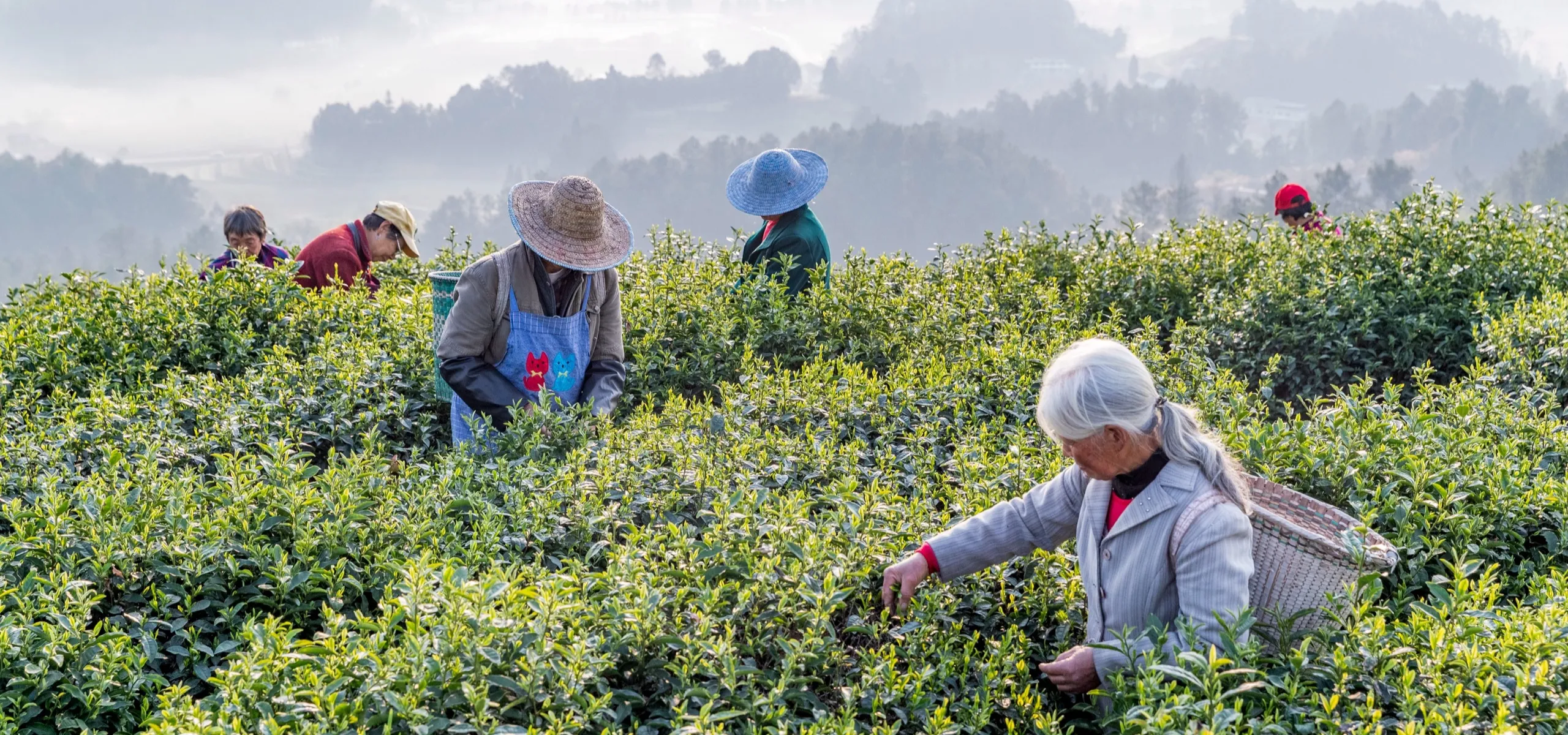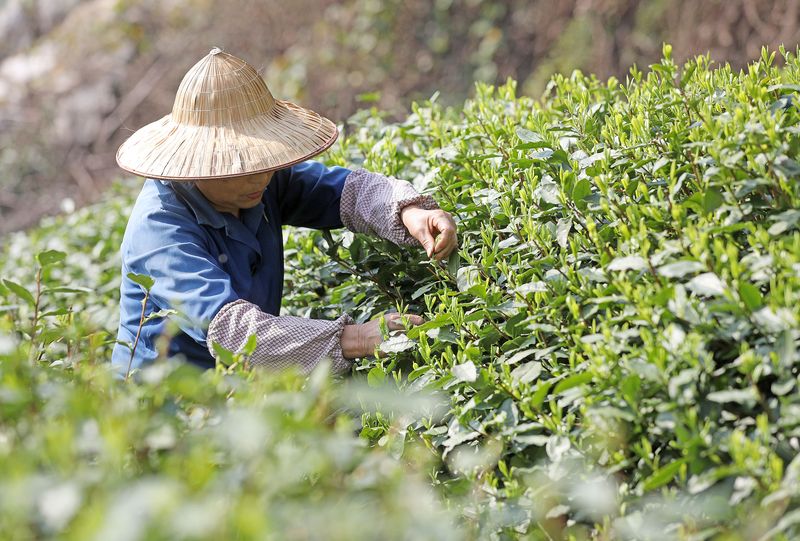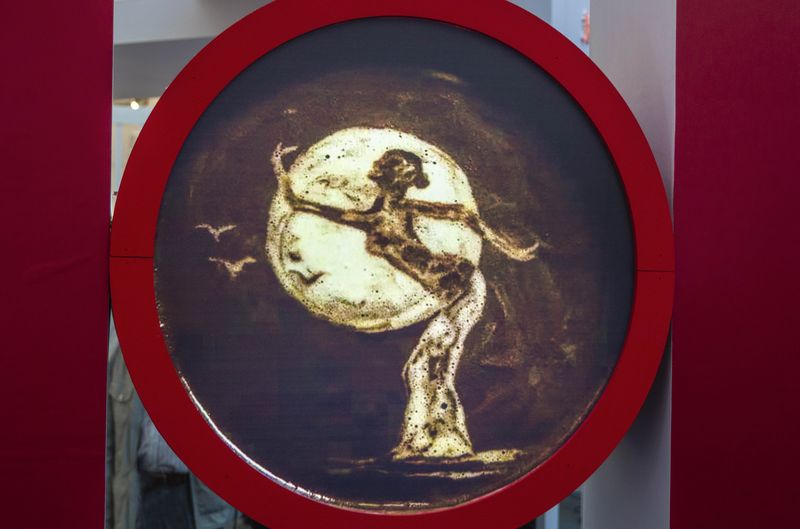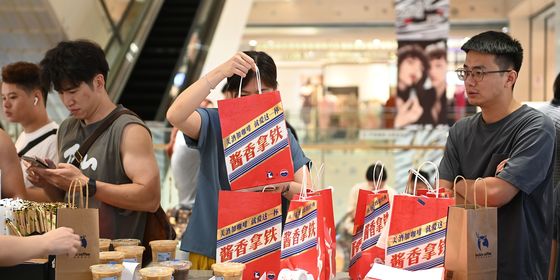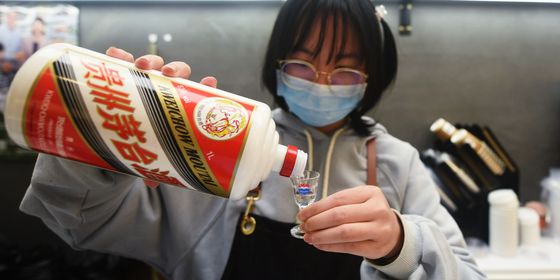Learn the legends, rituals, and drinking games behind China’s most famous drink
Asking for a “cup of tea” is no simple request in China: There are more than 2,000 types of teas, covering six categories—green, black, oolong, white, dark, yellow—as well as reprocessed varieties like flower and fruit-scented teas. In November 2022, “Chinese tea-making techniques and related customs” were recognized by UNESCO as a world heritage item—perhaps a long-overdue honor for a drink that empires were willing to steal to get.
Tea grows from the camellia sinensis plant, which is native to China. There are four major tea-growing regions, home to different varieties of tea. In the southwest region, covering the mountainous parts of Yunnan, Guizhou, and Sichuan provinces, dark tea grows at high altitudes amid the mountain mist. The Pu’er region in Yunnan is home to the fermented tea that shares its name, with a strong “mushroomy” taste and high prices to match.
In the southern region, covering provinces such as Fujian, Guangdong, and the Guangxi region, oolong, black tea, and white tea all grow in the nutrient-rich red soil, fed by annual monsoons and warm temperatures. The other two tea regions, Jiangbei and Jiangnan, fall north and south of the Yangtze River (respectively). Both yellow and green tea grow there.
The Jiangnan region is home to the so-called “queen of green tea,” Longjing. Growing near Longjing village in Hangzhou, Zhejiang province, the tea plant is protected from cold waves by surrounding peaks and quenched by the many mountain streams. The leaves are picked in April, the time of year when the sprouts are most tender. The leaves are first dried in the sun for half a day, then fried over a fire to remove the moisture.
As the first country to make tea, China has no shortage of tea-related legends, customs, and tales. The Classic of Tea (《茶经》), an encyclopedia written by a connoisseur called Lu Yu (陆羽) in the eighth century, credits the prehistoric god-emperor Shennong (神农) with the accidental discovery of tea. Shennong, who is also considered the founder of agriculture and Chinese medicine, is said to have tasted hundreds of herbs for research purposes, and camellia sinensis saved him from poisoning during one of his experiments.
Lu’s era, the Tang dynasty (618 – 907), was also when Buddhism came into the mainstream in China. Monks and devout Buddhists did not eat after noon of each day, so they would drink tea to alleviate their hunger and refresh their minds. At the Wanshou Temple located at the foot of Mount Jingshan in Hangzhou, a unique custom called the “Jingshan tea feast” has survived from the Tang dynasty until today.
Mount Jingshan is known for its springs, bamboo shoots, and a variety of tea called yunwu tea (云雾茶, “cloud mist tea”). The temple treats its guests to the local tea and visitors can experience many ancient customs, such as a tea list posted outside the hall to entice patrons, drumming, ritually pouring and sharing the tea, and sharing Buddhist wisdom with the guests. In the villages at the foot of the mountain, locals also create many mouthwatering dishes from yunwu tea, including tea chicken stew (茶园鸡) and stir-fired tea shrimp (茶香虾). The tea leaves are prized in cooking, as they absorb oil and refresh the palate.
In the Song dynasty, the period following the Tang, literary scholars began promoting tea consumption as a classy habit, ranked alongside music, chess, calligraphy, painting, poetry, and wine as the finer things in life. Tea houses emerged in this period as social hubs where people gathered to drink tea, play music, and listen to storytelling. Servers in tea houses who were skilled at pouring the beverage were even known respectfully as “tea doctors (茶博士).”
In Along the River During the Qingming Festival (《清明上河图》), a scroll painting by Zhang Zeduan (张择端) of the Song dynasty, over 20 tea houses can be seen dotted around the bustling streets in the Song capital Bianliang (today’s Kaifeng, Henan province). In tea houses, leisurely patrons with money developed a variety of games and competitions known as “tea contests (斗茶),” vying to see who could brew the clearest tea or the purest foam by stirring powdered tea leaves with a bamboo whisk. They also created a variety of drinking games, known as “tea challenges (茶令),” in which participants had to answer certain questions or compose verses on a theme (usually related to tea), or else be forced to drink tea.
A 2022 historical drama, A Dream of Splendor (《梦华录》), brought one ancient tea game back into the spotlight: the “hundred tea plays” (茶百戏), or the art of painting with tea foam. The story is set in the Song dynasty, and the lead character Zhao Pan’er, played by Liu Yifei, runs a tea house. In one scene, Zhao enters into a competition with an old tea house owner. She gracefully grinds tea into powder, dances to pour the water, and stirs the tea soup briskly with a bamboo whisk. As the tea foam thickens, she scoops it up with a teaspoon and “paints” a scene on the water. With a few strokes, the tea in the cup changes into the backdrop of a magical landscape painting.
Before acting in this scene, Liu was reportedly tutored by Zhang Zhifeng, an inheritor of this folk art from the Mount Wuyi region in Fujian province. With only tea and water, Zhang can create various landscape paintings full of vivid details such as birds and fish. The artworks are as fleeting as they are magical, lasting around 15 minutes before the foam dissipates. But the creativity is timeless—and with the recent UNESCO recognition of tea culture in China, this and other customs surrounding tea may be well preserved for generations to enjoy.





